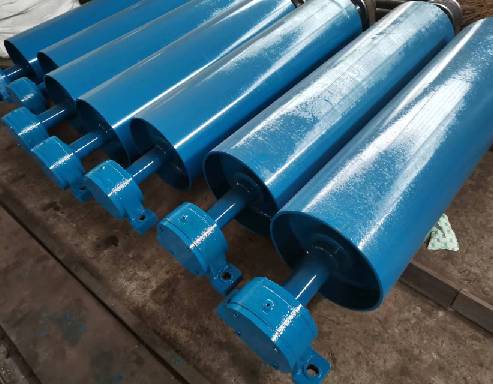 Afrikaans
Afrikaans  Albanian
Albanian  Amharic
Amharic  Arabic
Arabic  Armenian
Armenian  Azerbaijani
Azerbaijani  Basque
Basque  Belarusian
Belarusian  Bengali
Bengali  Bosnian
Bosnian  Bulgarian
Bulgarian  Catalan
Catalan  Cebuano
Cebuano  Corsican
Corsican  Croatian
Croatian  Czech
Czech  Danish
Danish  Dutch
Dutch  English
English  Esperanto
Esperanto  Estonian
Estonian  Finnish
Finnish  French
French  Frisian
Frisian  Galician
Galician  Georgian
Georgian  German
German  Greek
Greek  Gujarati
Gujarati  Haitian Creole
Haitian Creole  hausa
hausa  hawaiian
hawaiian  Hebrew
Hebrew  Hindi
Hindi  Miao
Miao  Hungarian
Hungarian  Icelandic
Icelandic  igbo
igbo  Indonesian
Indonesian  irish
irish  Italian
Italian  Japanese
Japanese  Javanese
Javanese  Kannada
Kannada  kazakh
kazakh  Khmer
Khmer  Rwandese
Rwandese  Korean
Korean  Kurdish
Kurdish  Kyrgyz
Kyrgyz  Lao
Lao  Latin
Latin  Latvian
Latvian  Lithuanian
Lithuanian  Luxembourgish
Luxembourgish  Macedonian
Macedonian  Malgashi
Malgashi  Malay
Malay  Malayalam
Malayalam  Maltese
Maltese  Maori
Maori  Marathi
Marathi  Mongolian
Mongolian  Myanmar
Myanmar  Nepali
Nepali  Norwegian
Norwegian  Norwegian
Norwegian  Occitan
Occitan  Pashto
Pashto  Persian
Persian  Polish
Polish  Portuguese
Portuguese  Punjabi
Punjabi  Romanian
Romanian  Russian
Russian  Samoan
Samoan  Scottish Gaelic
Scottish Gaelic  Serbian
Serbian  Sesotho
Sesotho  Shona
Shona  Sindhi
Sindhi  Sinhala
Sinhala  Slovak
Slovak  Slovenian
Slovenian  Somali
Somali  Spanish
Spanish  Sundanese
Sundanese  Swahili
Swahili  Swedish
Swedish  Tagalog
Tagalog  Tajik
Tajik  Tamil
Tamil  Tatar
Tatar  Telugu
Telugu  Thai
Thai  Turkish
Turkish  Turkmen
Turkmen  Ukrainian
Ukrainian  Urdu
Urdu  Uighur
Uighur  Uzbek
Uzbek  Vietnamese
Vietnamese  Welsh
Welsh  Bantu
Bantu  Yiddish
Yiddish  Yoruba
Yoruba  Zulu
Zulu Rubber Lagging Solutions for Enhanced Conveyor Pulley Performance and Longevity
Rubber Lagging for Conveyor Pulleys Enhancing Performance and Durability
Conveyor systems are the backbone of many industries, enabling efficient transport of materials across various processes. At the heart of these systems are pulleys, which play a critical role in the operation of conveyor belts. The efficiency and longevity of these pulleys can be significantly improved through the application of rubber lagging. This article delves into the advantages and importance of rubber lagging for conveyor pulleys and how it can enhance overall operational performance.
Rubber lagging involves the application of a rubber layer on the surface of conveyor pulleys. This enhancement is not merely cosmetic; the rubber layer provides numerous functional benefits that can lead to improved performance and increased service life for both the pulley and the conveyor system.
One of the primary advantages of rubber lagging is its ability to provide better traction between the pulley and the conveyor belt. This increased friction reduces slippage, ensuring that the belt moves smoothly and efficiently. Slipping can lead to belt damage and significant operational downtime, which can be costly for businesses. By improving grip, rubber lagging minimizes the likelihood of these issues, thereby enhancing the reliability of the conveyor system.
In addition to improving traction, rubber lagging also serves as a protective barrier for the pulley itself. The continual wear and tear on pulleys can result in surface damage, affecting their structural integrity and overall functionality. Rubber lagging acts as a cushioning layer, absorbing impact and reducing the effects of abrasion from the conveyor belt. This protective aspect can extend the lifespan of the pulleys, reducing the need for frequent replacements and maintenance.
rubber lagging for conveyor pulley

Moreover, rubber lagging is effective in reducing noise and vibration during operation. Conveyor systems that operate at high speeds or those transporting heavy materials can generate considerable noise and vibration. These factors not only affect operator comfort but can also lead to mechanical failures over time. By utilizing rubber lagging, companies can create a quieter and more stable operational environment, contributing to a more pleasant workplace and potentially increasing productivity.
Thermally speaking, rubber lagging also offers insulation against heat. In high-temperature applications, the materials used in fryer and processing systems may cause pulleys to heat up. Rubber lagging provides thermal insulation, preventing heat transfer to the pulley and prolonging its operational life. The ability to withstand extreme conditions makes rubber-lagged pulleys especially useful in industries such as mining, food processing, and manufacturing.
Another significant aspect of rubber lagging is its versatility in design. Rubber lagging is available in various thicknesses, patterns, and rubber compounds, allowing for tailored solutions that meet specific operational requirements. For example, the choice of a certain texture can enhance grip or facilitate better water drainage, depending on the application. This adaptability ensures that rubber lagging can be optimized for a wide range of conveyor systems, achieving maximum effectiveness.
Furthermore, the installation of rubber lagging is relatively straightforward. Many maintenance teams can apply the lagging without professional assistance, which can result in reduced downtime and labor costs. The simplicity of installation, combined with the long-term benefits, makes rubber lagging an economically sound investment for companies looking to enhance their conveyor systems.
In conclusion, rubber lagging is an essential component in the optimization of conveyor pulleys. It provides enhanced traction, protects the pulley from wear, reduces noise and vibration, and contributes to thermal stability. Its versatility and ease of installation make it a favorable choice for various industries. By investing in rubber lagging for their conveyor pulleys, companies can not only improve operational efficiency but also extend the lifespan of their equipment, leading to significant cost savings over time. Embracing this technology is a forward-thinking approach to conveyor system management, ensuring that operations remain smooth and productive.
-
Revolutionizing Conveyor Reliability with Advanced Rubber Lagging PulleysNewsJul.22,2025
-
Powering Precision and Durability with Expert Manufacturers of Conveyor ComponentsNewsJul.22,2025
-
Optimizing Conveyor Systems with Advanced Conveyor AccessoriesNewsJul.22,2025
-
Maximize Conveyor Efficiency with Quality Conveyor Idler PulleysNewsJul.22,2025
-
Future-Proof Your Conveyor System with High-Performance Polyurethane RollerNewsJul.22,2025
-
Driving Efficiency Forward with Quality Idlers and RollersNewsJul.22,2025





























